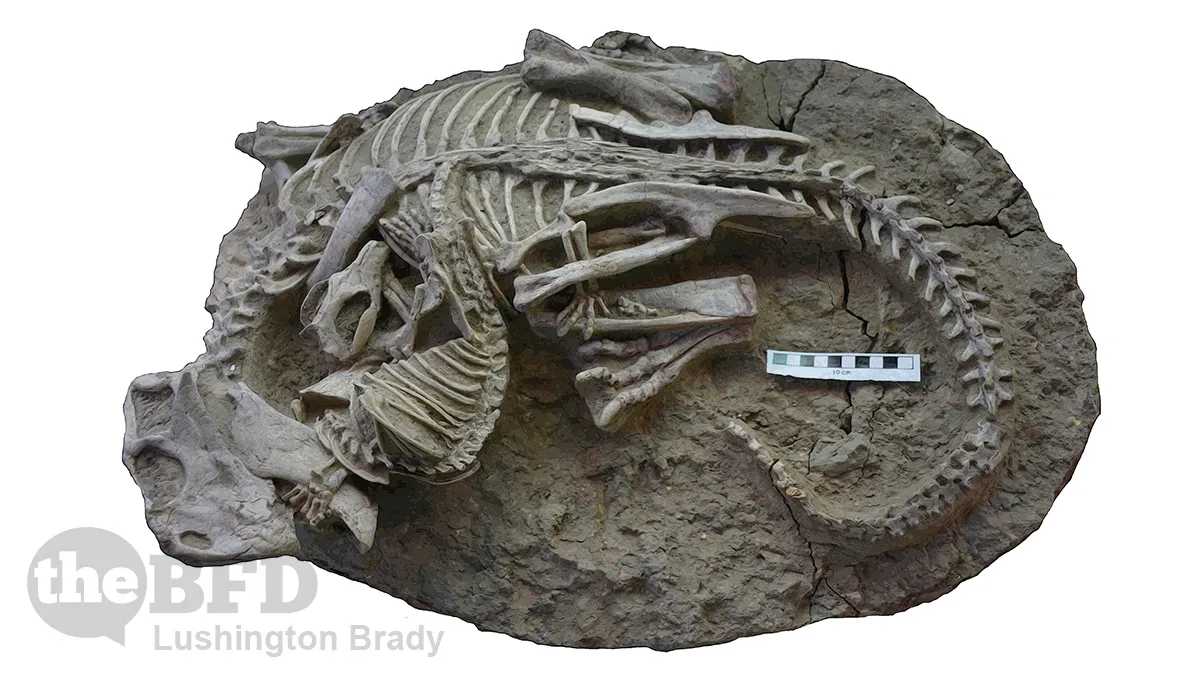Table of Contents
Reading old science fiction is an often eye-opening glimpse of long-discarded scientific theories. Jules Verne’s 20,000 Leagues Under the Sea, for instance, refers to the idea that continents grew from atolls. Whole libraries of SF were built on the long-debunked notion of Martian canals.
The demise of the dinosaurs has similarly been fertile ground for science fictional speculation. In the stomping opening track of Jefferson Starship’s Blows Against the Empire SF-concept album, the lyrics refer a long-discarded theory that mammalian egg-stealing doomed the dinosaurs.
You know Tyrannosaurus Rex was destroyed before/By a furry little ball that crawled along/The primeval jungle floor/He stole the eggs of the dinosaur!
Still, it’s long been more or less assumed that the mammals who in fact co-existed with dinosaurs for some 150 million years were indeed furry little balls who ran and hid along the primeval jungle floor. The poor little fuzzballs had to wait for a convenient asteroid to wipe the evolutionary slate clean and leave the space for them to dominate the planet. Certainly, little rat-like mammals could never have competed against the lumbering saurian colossi.
Or could they?
An unusual fossil find in China suggests some early mammals may have hunted dinosaurs for dinner.
The fossil shows a badger-like creature chomping down on a small, beaked dinosaur, their skeletons intertwined.
Of course, we’re not talking about taking down a tyrannosaur that could swallow a human in a single bite. This was more on the scale of a cat taking on a medium-size dog.

The mammal in the fossil duo is the meat-eating Repenomamus robustus, about the size of a house cat, Dr Mallon said.
The dinosaur – Psittacosaurus lujiatunensis – was about as big as a medium-sized dog, with a parrot-like beak.
This dinosaur species was a plant eater […]
The mammal is perched on the dinosaur, its paws gripping the reptile’s jaw and a hind limb while its teeth plunge into the dinosaur’s rib cage.
Was it predation, though? Or merely scavenging? Mammals were, after all, known to scavenge dinosaur carcasses or their young. Other fossils have shown mammals with the remains of small dinosaurs in their gut.
Looking at the fossil, though, it’s hard to escape the notion that this is an ancient combat frozen in time.
Even though the mammal is much smaller, researchers believe it was in the process of attacking the dinosaur when they were both caught in the volcanic flow, said study author Jordan Mallon, a palaeobiologist at the Canadian Museum of Nature […]
“It does seem like this is a prehistoric hunt, captured in stone, like a freeze frame,” said University of Edinburgh palaeontologist Steve Brusatte, who was not involved with the study […]
[T]he new find suggests mammals may have preyed on dinosaurs several times their size, instead of just scavenging ones that were already dead, Dr Mallon said.
But, how on earth were two (or at least one, presumably) living animals so caught in the act of duking it out?
The find comes from a site known as “China’s Pompeii”, where mud and debris from long-ago volcanoes buried creatures in their tracks […]
The fossil, described in the journal Scientific Reports on Tuesday, shows two creatures from around 125 million years ago, during the Cretaceous period.
Of course, as with any Chinese knockoff, there’s always the distinct possibility of forgery.
The study authors acknowledged that a number of fossil forgeries have previously occurred in China, which Dr Mallon said was a concern when they started their research.
But after doing their own preparations of the skeletons and analysing the rock samples, he said they were confident that the fossil – which was found by a farmer in 2012 – was genuine, and would welcome other scientists to study the fossil as well.
ABC Australia
Still, as Mallon says, it remains more likely that more often it would have been the dinosaurs chomping down on the upstart little rat.
It’s nice to know, though, that occasionally our distant ancestors were able to fight back.









